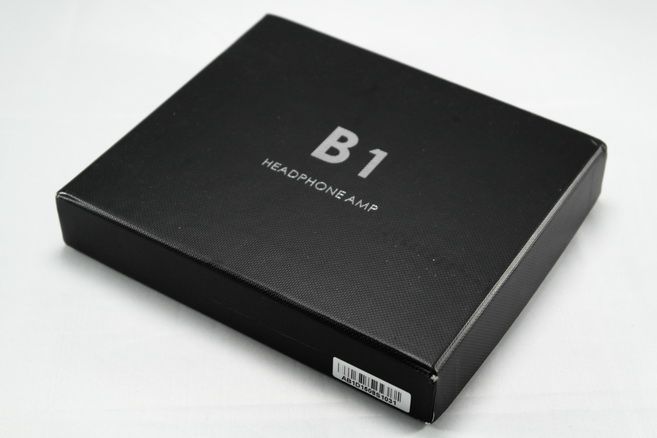
Spec
Recommended Headphone Impedance: 16~300ohm
Size: 65 x 110 x 18mm
Weight: 230g
Typical THD: Less than 0.0008% @ 1 kHz, 600 ohm / -0dB
SNR: More than 124dB @ 600 ohm
Frequency Response: 10Hz ~ 20kHz, +/- 0.15dB
Crosstalk: Less than 110dB @ 1kHz, 600 ohm
Power (Class A): 25mW @ 16 ohm, 50mW @ 32 ohm, 100mW @ 300 ohm
Gain: +5dB / +15dB
Dual Quiescent Current: 20mA / 40mA
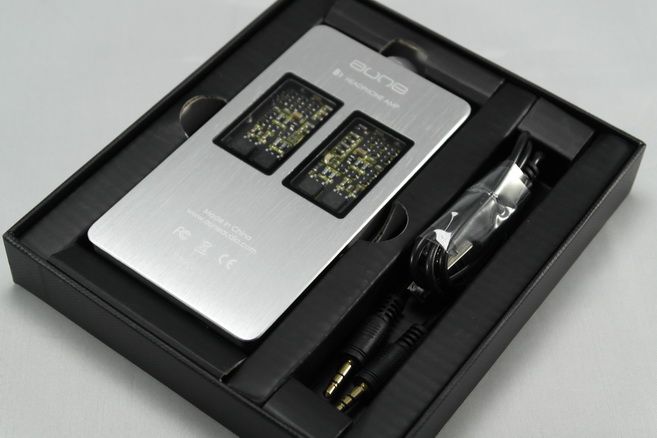
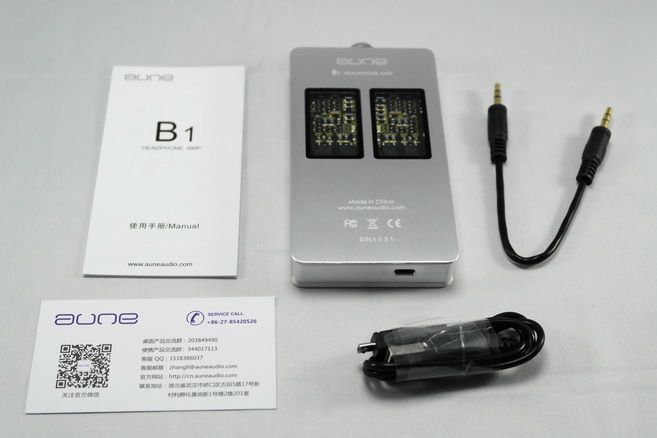
Build Quality
To say B1 is ‘well built’ is almost an understatement – it is drop-dead-gorgeous! The aluminium housing is very well machined, smooth to the touch without any sharp corner. Two transparent windows in the belly allow you to peek inside the amp circuit and two faux leather strips on the top that not only look good, but also serves as a cushion for any device you want to strap onto the B1.
If there is any real complaint that I have, I’ll say the volume knob is a bit too low profiled / oddly shaped, making it harder to adjust volume, especially when there is two 3.5mm plug next to it. Last but not least – and not really a complaint here but more of a suggestion – as Aune warns that the current switch must not be used when B1 is turned on, I’ll think a more logical choice will be to make the switch even more recessed than it is now so it won’t get accidentally switched by any chance.
Battery Life
Aune quotes that B1 has a 10hours play time running on 20mA mode and half that with 40mA mode. I actually get a bit less, probably around 3~4 hours in 40mA, though it really depends on the load as well as the volume. Suffice to say, the battery life isn’t exactly great. Given it is a Class A amp that isn’t known for power efficiency, I guess that much is expected.
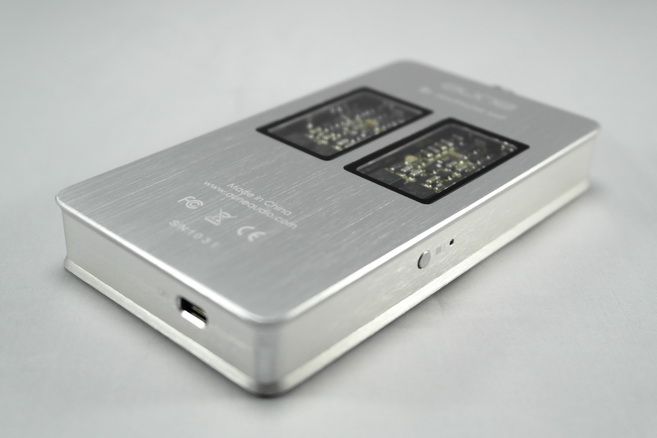
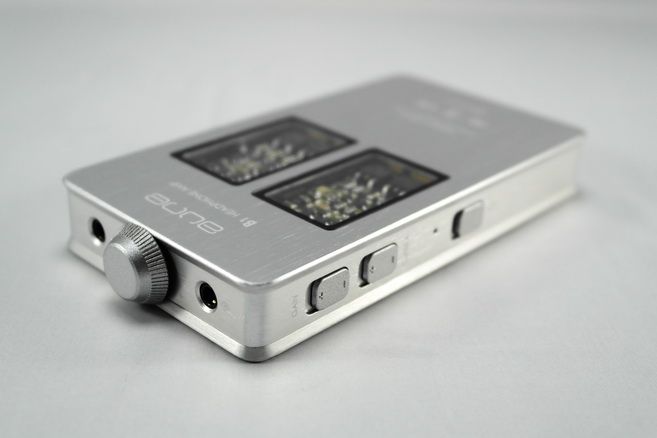
Gain, Hiss and EMI
B1 comes with two gain settings: +5db and +15dB. Personally, I’ll think it would have been better with +3dB and +12dB, as the current setting might be too high for sensitive headphone and IEM, getting too loud (or even worst, channel imbalance) with just a small turn of the volume knob. I will even consider a zero or negative gain setting being helpful for those with really sensitive custom IEM.
There is almost no hiss to speak of. There is in fact almost no ‘click and pop’ during start up as well. B1 is very well behaved in those regard. There is however some EMI issue. Cell phone interference can be picked up in close proximity, though not particularly loud and therefore not a serious concern.
Tech Prelude
So what is Class A - and if it is that good, why didn’t we see more of it? To put it simple: music is in wave form, swing from one end to another and back for a whole 360 degree. A Class A amp is a device that continuously operates the whole 360 degree non-stop. In the process it usually will waste a lot of power and generate a lot of heat, though it is also considered to be better sounding by many. Most of the amp (and mainly the opamp used) in the market however are in Class A-B configuration, where only half the components are active. The active half is where the signal is, and the inactive half only switches on when the signal arrives. It is far more efficient than Class A, but has its own problems - namely more distortion as components are switched on and off all the time and signal gets distorted when traveling from one end to the other. But at the end, Class A-B is usually the choice for portable gears due to practicality, as the distortion really isn’t bad enough to outweigh the benefit of less heat and much longer battery life.
Being full discrete means there is no integrated circuitry in the signal path. It is just another way of saying no opamp but rather individual discrete components (resistors, caps, transistors, etc) is used for amplification. B1 isn’t the first full discrete portable amp I have seen and this kind of implementation does require a lot of attention to detail, especially on parts matching, to show how good it is. A really well implementation can really sound exquisite, just as good as any top tier opamp based portable amp.
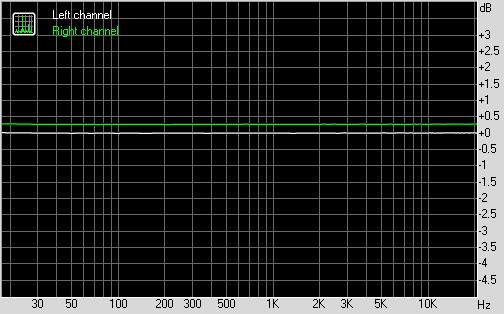
Sound Quality
As usually, my SQ assessment starts with an RMAA measurement, and the result is pretty good. No issue can be seen and the number match up with my reference O2 nicely, which is a very good sign. In fact, B1 outperforms O2 noticeably on stereo crosstalk, no doubt thanks to its dual-mono discrete circuitry that keeps the left and right channel further apart than what opamp usually does. However, the result on current output as well as output impedance is really less than stellar. First, the output impedance is rather high - measured and calculated to about 10 ohm, which is no good news for multi-drivers IEM. Second, current output is fairly low. Aune listed B1’s output power of 25mW @ 16ohm is quite low for a portable amp, and my measurement pretty much confirm it. In contrast, a FiiO E06 can pump out 4 times more power on the same load. One thing I noticed is that B1 @ 20mA mode begins to clip when I pushed the volume too high (regardless of gain setting) during my RMAA measurement (*with a 47ohm load). This is independent of the input volume so my guess is that it is running out of current to remain in Class A at such a high volume, as the clipping on high volume disappears once I retest it on 40mA mode. From both the prospective of SQ as well as battery life, I think easy-to-drive load probably can stay happy with 20mA mode, but anything more demanding should perform better in 40mA mode, though battery life will be cut short. Regardless, both modes don’t really have a lot of current output to speak of. In my opinion, this is very likely the inherent issue of being Class A – trying to push for higher output and you will end up with a portable heater that doesn’t run for very long; trying to keep everything reasonable and the output power will be limited, as in the case of B1. Technically speaking though, I think B1 is better suited for higher impedance headphone rather than lower one.
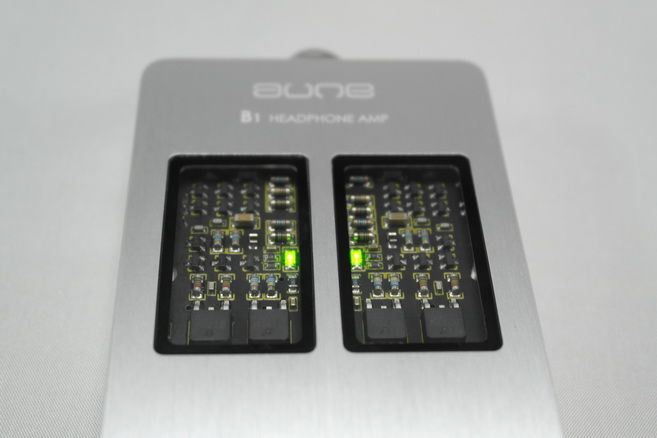
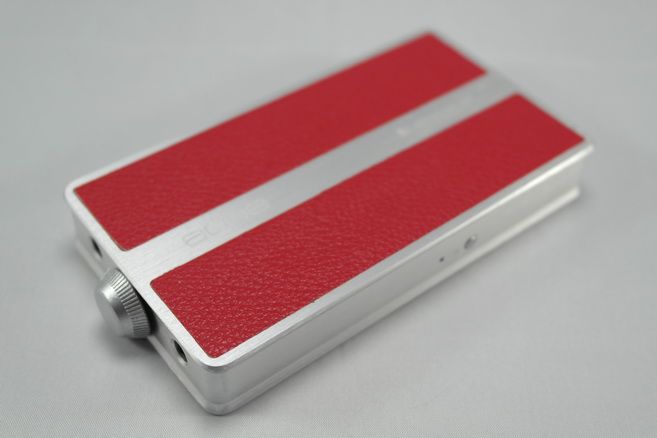
Subjectively, B1 sounds really good, as good as any top-tier portable amp I have heard. It also sounds rather clean and neutral, pretty much comparable to my reference O2 for that matter. While still very clean sounding, the mid does sound slightly more hollow in 20mA mode, giving the illusion of extra airiness and a bass kick that is stronger than it ought to be, which can be interpreted as being more powerful than the amp is capable of, though not really the case as I find the texture on the midrange, especially vocal, incomplete. Bass note, while has a good kick to it, does sound thinner than it should. Everything however snaps back to normal once switched to 40mA mode – the vocal is restored and all elements are inline again, though no more ‘extra’ airiness. But I don’t consider that a loss as B1 already has a really excellent soundstage and imaging. It makes a pair of flat sounding ER4S feel almost like surround sound, and that’s a wonder of its own and pretty much the best soundstage I have ever heard on a portable amp that doesn’t have any EQ enhancement. Despite not having a lot of power in measurement, B1 doesn’t sound like it is lacking power in 40mA mode. It is not the tightest in control, but it doesn’t sound loose either. All and all, it holds up quite well
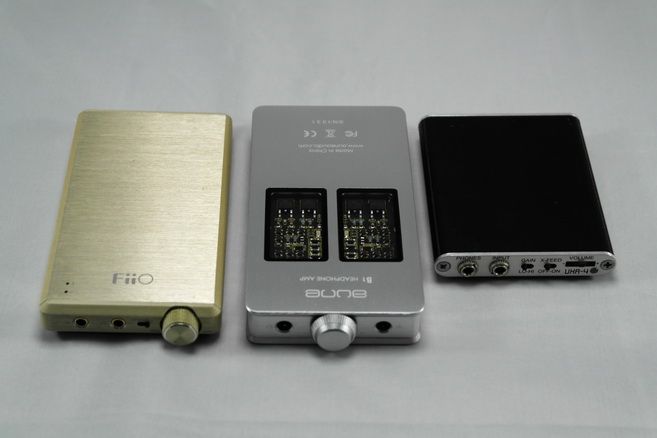
Size Comparison (from left): FiiO E12DIY, Aune B1, and Leckerton Audio UHA-4
Sum-up
I really like B1. It is well built and it sounds great – if it isn’t for multi-driver / very low impedance headphone and IEM, I have no problem recommending it. Aune took on the challenge to manufacture a Class A full discrete portable amp and they almost able to knock it out of the ballpark. Sure, there are still a few kinks here and there – but for as good as it is, Aune really deserves some credit. It isn’t the portable amp for every occasions – but where it does work, it works really well.
This review is part of Aune Worldwide Review Tour:
http://www.head-fi.org/t/765999/aune-b1-headphone-amp-worldwide-review-tour-reviewers-wanted





